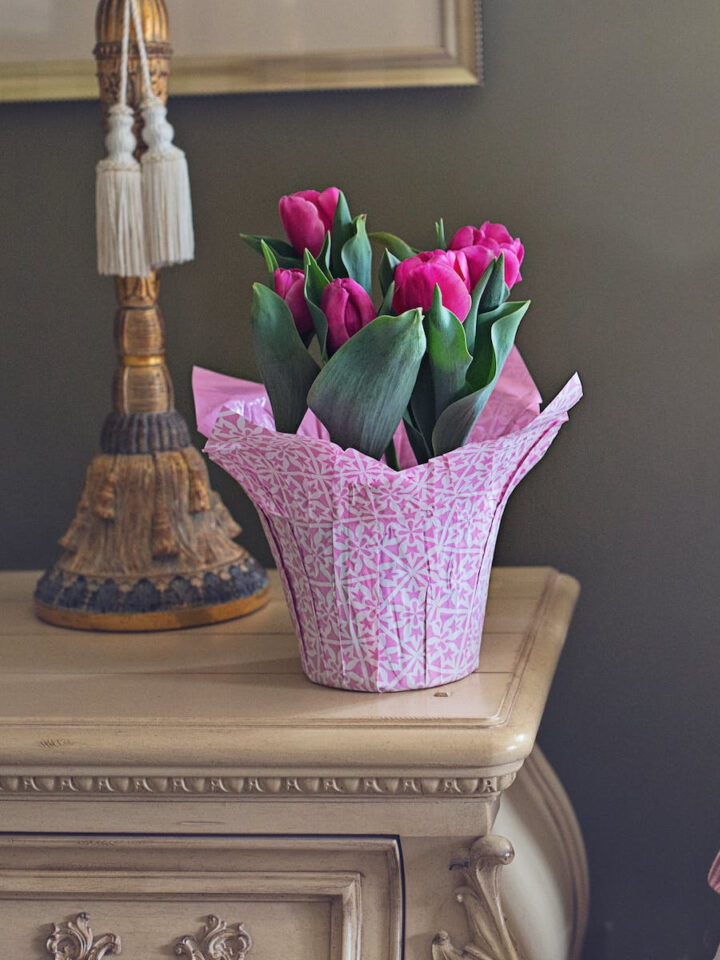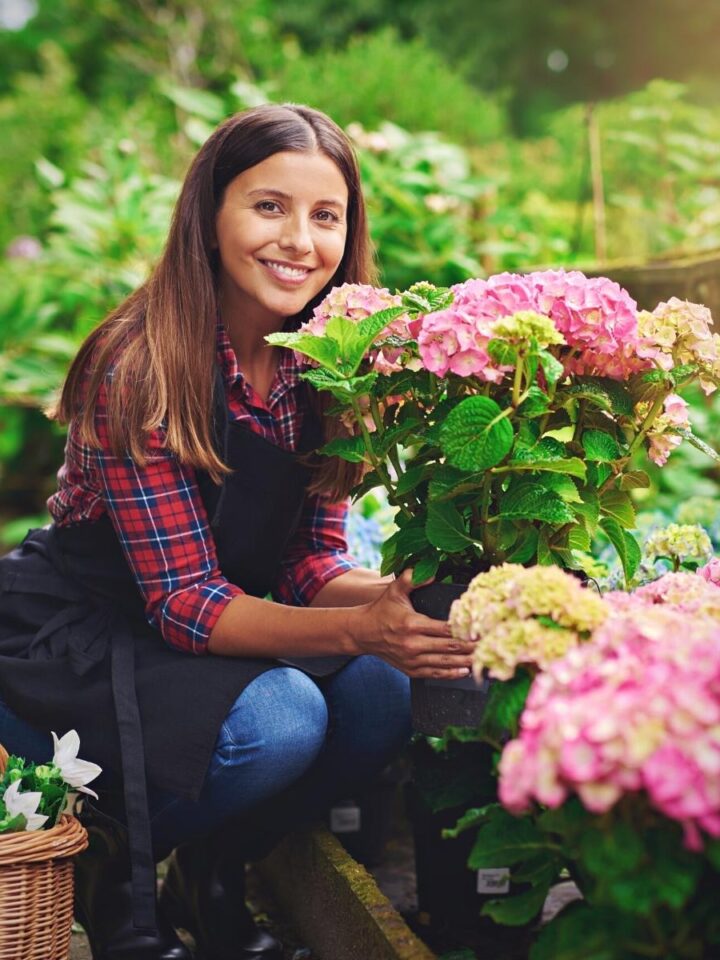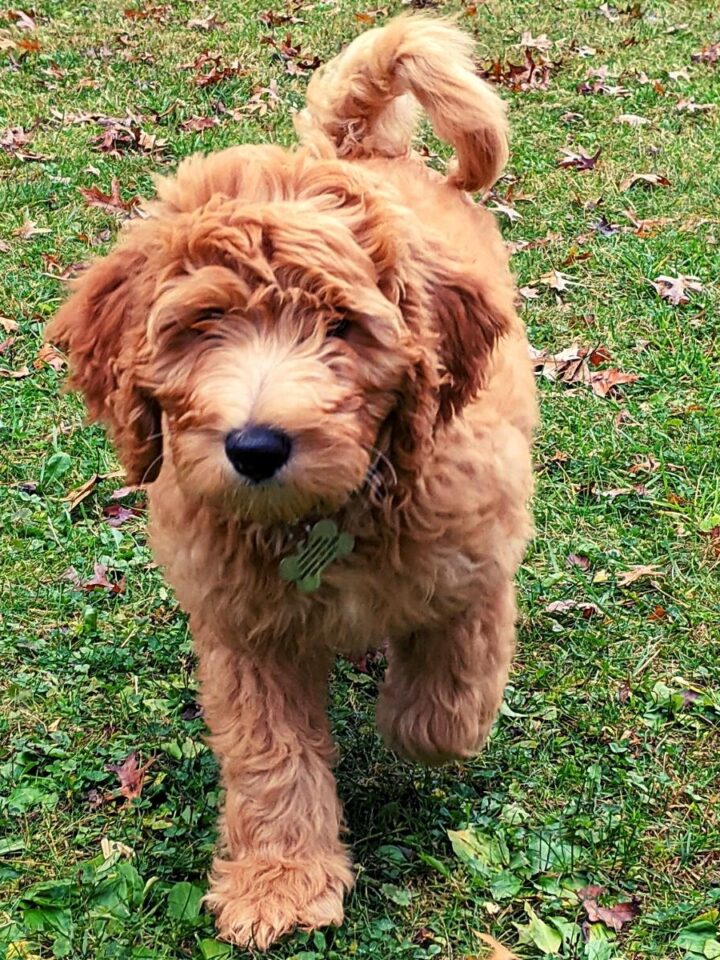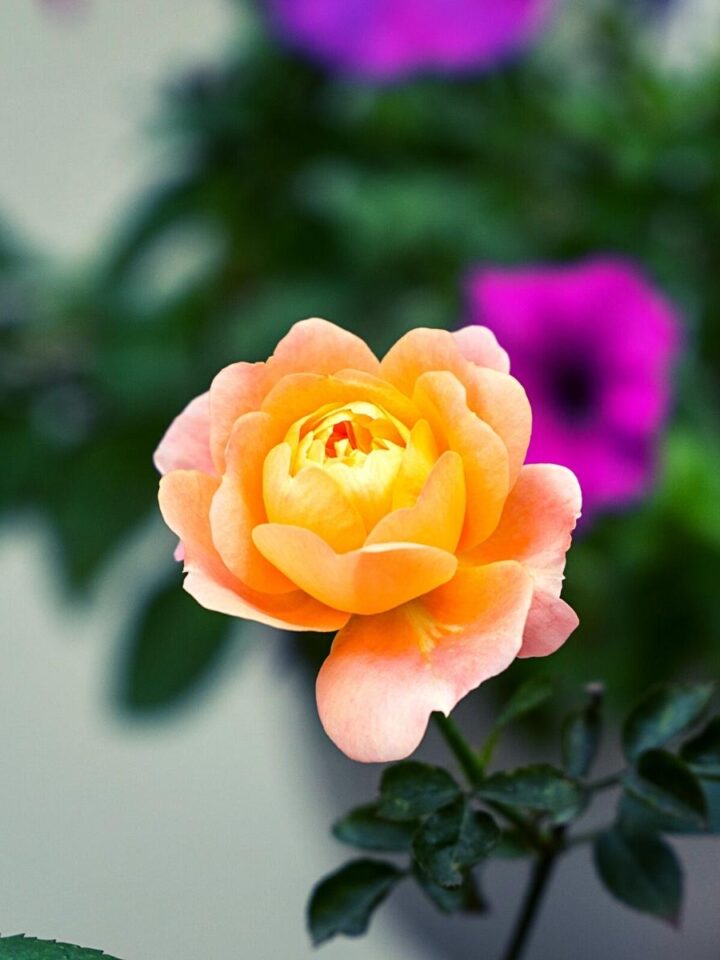This post contains affiliate links, which means I will make a commission at no extra cost to you should you click through and make a purchase. As an Amazon Associate I earn from qualifying purchases.
Best Starter Guide for Starting a Butterfly Garden? To attract butterflies to your garden, you have to make your yard more inviting to them. You’ll need to provide plants that the caterpillars can use, food for the adult butterflies, and a good place for the butterflies to breed.

An Introduction to Butterfly Gardening
Butterflies often congregate by the edges of mud puddles. You’ve probably seen this before. It isn’t exactly known why butterflies enjoy mud puddles so much, but it’s thought that it may be certain minerals present in the muddy water. If you want to attract many butterflies, you might consider keeping some damp areas in your garden.
Female butterflies need plants that can be eaten by the caterpillars that hatch from their eggs. Black swallowtails prefer dill and parsley, for example. Monarch butterflies typically only lay their eggs on milkweed. Female butterflies spend a lot of time searching for these plants to lay their eggs on.
Adult butterflies eat nectars from various flowers. Flowers that contain a lot of nectar are especially attractive to butterflies. These flowers are usually brightly colored and sweetly scented. Some species of butterflies feed on the honeydew produced by aphids. Some even feed on plant sap, bird feces, or rotting fruit!
Your butterfly garden should contain at least one big patch of flowers that will attract butterflies.
You may want to get flowers that bloom in sequence because this will keep butterflies visiting your garden more often.
Most varieties of butterflies will also need some shelter from the wind. Although they like open areas with a lot of sun, you’ll probably need to provide some windbreak to protect them from high winds that can disturb them.
You should bear in mind that many flowers that are preferred by butterflies are considered weeds. For example, dandelion is very attractive to several types of butterflies. Thistle is another weed that many kinds of butterflies enjoy.
If you have an herb garden or vegetable garden, you may notice some butterflies congregating on some of your plants there. The European cabbage butterfly enjoys broccoli, cabbage, and other cruciferous vegetables. The black swallowtail often frequents herbs such as dill and parsley.
Don’t use insecticides in your garden unless necessary because they can kill caterpillars. Some insecticides can also kill the adult butterflies if they light on plants that have been treated or drink the nectar that was polluted by poison.
Some flowers you should plant if you like to attract butterflies include cruciferous vegetables like broccoli and cabbage, herbs like parsley and dill, and many types of flowers. Some great flowers for butterfly gardens include asters, lilacs, verbena, zinnias, cosmos, marigolds, sunflowers, thistles, butterfly bush, bee balm, and sweet pea.
Making your garden hospitable for butterflies doesn’t take a lot of extra work. Merely keeping a small wet area for them and planting a few plants that they’ll enjoy is often enough to attract a number of butterflies.
Common North American Butterflies
North America has a wide variety of butterfly species. There are several hundred known species of butterflies that live in North America.
We’re going to take a look at a few of the most common North American butterflies.
The monarch butterfly is one of the most well-known butterfly species. It’s common all around the United States and the southern part of Canada. Monarch caterpillars eat milkweed plants exclusively.
Because milkweed contains toxins, monarch larva and butterflies are not eaten by predators. They live mostly in open, sunny places. They especially love meadows that are full of weeds. They live on various types of milkweed, including common milkweed, scarlet milkweed, and dogbane.
Adult monarch butterflies feed off the nectar of beggarticks, coneflowers, black-eyed Susan, goldenrod, New England aster, and several thistle types. The Eastern tiger swallowtail is undoubtedly one of the most easily recognizable butterflies in the U.S.
It is often found in forests and streams but may also be found around flowering bushes in city gardens. It loves flowers with a lot of nectar.
Males are yellow with black decoration, and females are either yellow or black.
They generally breed on broadleaf trees like cottonwood, cherry, birch, poplar, and willow. Their favorite nectar flowers are typically phlox and milkweed. The painted lady butterfly typically lays its eggs on thistle or asters.
It is one of the most widespread butterfly species in the word and can be found all over Africa, Europe, Asia, and North America. They seem to be especially attracted to feeding on goldenrod. They also tend to be attracted to butterfly bushes.
The red-spotted purple butterfly is a ground-dweller. They fly low and light on low-lying branches or the ground. They look similar to a poisonous butterfly known as the pipevine swallowtail.
They breed on willows, poplars, cherry trees, apples, hawthorns, and aspens. They feed on thistles, lilac, azaleas, phlox, petunias, lupines, butterfly bush, and bergamot, among others. The pipevine swallowtail is a beautiful butterfly with iridescent blue on the wings.
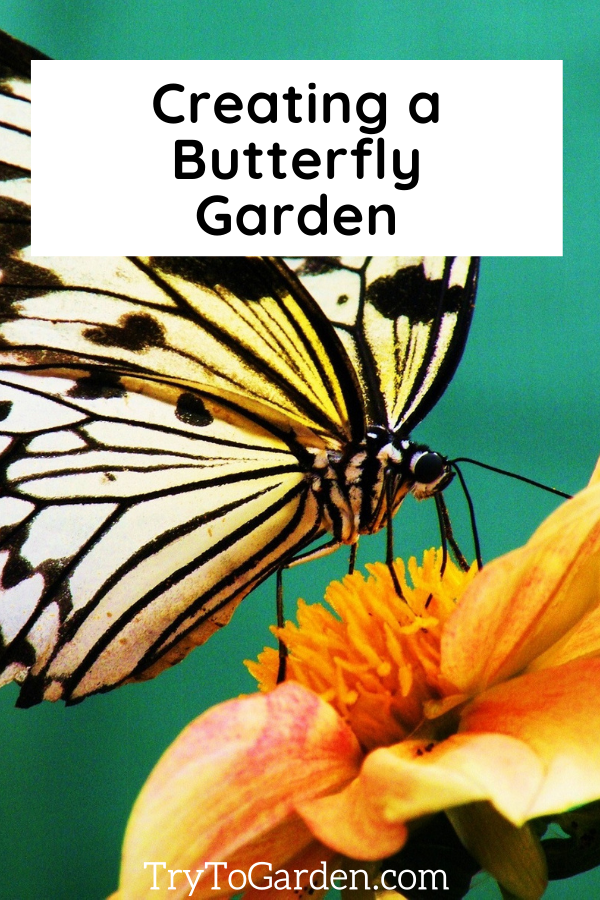
They lay eggs on many different types of trees, similar to the red-spotted purple. They also eat the same kinds of nectar. The white cabbage butterfly is undoubtedly widespread. It’s a white butterfly with few markings and is relatively small in size. It lays eggs on radishes, cabbage, broccoli, and nasturtiums.
Mourning cloak butterflies can survive throughout the winter in many parts of the world. It’s native to North America and Eurasia. Their wings are very dark red, with a yellowish border around the wings.
They also have a dark band with brighter blue spots on the wings. Their caterpillars are raised on willows, aspens, cottonwoods, elms, and paper birch trees. They are especially common on willows and elms.
Adult butterflies usually live on sap and rotting fruit but may occasionally feed on flower nectar. If you’d like to attract certain butterflies species, you’ll need to provide them with the food the adults need and a good place to lay their eggs.
Creating a Butterfly Garden
We’re going to look at the basics of creating a garden that is perfect for butterflies. You need to plan a garden to attract butterflies, keeping them in your garden, and making the environment friendly for them to breed.
The first thing you need to do is choose several plants that produce nectar for the butterflies and hopefully provide continuous blooms through the summer. The most important time to have blooms in mid to late summer.
This is when most butterflies are most active. Flowers that produce multiple blooms on a single plant and contain a lot of nectar is best.
You probably want to choose a variety of annuals for your garden, because annuals bloom all throughthrough the season. This provides butterflies with a continuous supply of nectar and will keep the butterflies coming to your yard all season.
Some perennials are perfect for attracting butterflies. Lilac and asters are favorites for butterfly gardens. Coneflowers are a lovely wildflower that butterflies adore. Herbs such as parsley, dill, and mint provide good nectar for butterflies.
You can make homemade butterfly feeders from small jars, such as baby food jars. You drill a hole in the middle of the lid and stuff it with cotton. Then you fill the jar with a mixture of 1:9 sugar and water. (one part sugar and nine parts water.)
Then you can decorate the jar with brightly colored bits of felt to attract the butterflies to it. Hang it somewhere in your garden, and the butterflies will come to suck the “nectar” out through the cotton in the lid.
In addition to providing plants that will feed the butterflies and their larva, you’ll need to be sure your yard is hospitable in other ways. Butterflies need a bit of shelter for their eggs. You’ll need to provide some windbreak around your butterfly garden, so the butterflies can lay their eggs in an area where the wind won’t harm them.
They also need a mud puddle at which to congregate. Butterflies like to gather at the edges of puddles, so you’ll need to provide at least one for them. It would help if you also were sure not to use too many pesticides around your garden.
These poisons can kill butterfly larva, and they can also harm the butterflies themselves. It doesn’t take a lot of insecticides to kill these delicate creatures. Insecticides can kill delicate caterpillars before they have a chance to grow into butterflies.

They can also kill adult butterflies when they light onto the plants to rest or consume nectar that has been tainted with poison. Before you spray any of your plants, be sure the creatures you’re trying to kill are damaging pests.
Some butterfly larva can look remarkably similar to common garden pests, and although butterfly larvae do feed on plants, they don’t typically eat enough to do any real damage. So be sure your identification is correct before you spray.
Most flowers that are brightly-colored and sweet-smelling should attract butterflies to your garden. It would be best if you planted a wide variety of flowers, mostly annuals, to attract the most different types of butterflies. Since other species are attracted to different types of flowers, having a good variety will ensure that you get the most diverse types of butterflies visiting your garden.
Butterfly Host Plants
Host plants are the plants that butterflies like to lay their eggs on. These are the plants that caterpillars feed off while they’re growing and may also provide a place for the caterpillars to make their cocoons.
These plants may receive some damage, so be prepared for that. It’s surprising how many people plant these things with the specific purpose of attracting butterflies to lay their eggs there, yet they’re shocked with the caterpillars to start to eat the plants!
Caterpillars are small and slow. They can’t travel very far searching for food, so butterflies generally only lay their eggs on plants where they know the caterpillars can survive. If they lay their eggs on the wrong type of plant, the caterpillars will probably not live.
You may be a bit disturbed at first to willingly allow “pests” to chew on your garden plants. If you’re bothered by the sight of plants with holes in them, you might want to locate your host plants in a location that is a bit less visible.
Make sure you provide these host plants nearby the nectar-providing plants. If they are located too far away, you will probably end up with fewer butterflies in your garden. Now we’ll take a look at some of the most popular butterflies and which plants you’ll need to have as host plants if you wish to have the chance to have these particular butterflies in your garden.
Having these host plants doesn’t guarantee you’ll have any of these butterflies, but it certainly increases your odds! Monarch butterflies are one of the most popular and well-known butterflies. If you don’t know what monarch butterflies are, they’re those medium-sized orange and black butterflies. They only lay their eggs on milkweed. If you want monarch butterflies to visit your yard, then you must have milkweed available.
Black swallowtails are those giant yellow and black butterflies. I think everyone in the U.S. has probably seen these! They’re very large and noticeable. They lay their eggs on dill, carrots, parsley, and fennel. You’ll see these around a lot of herb and vegetable gardens.
European cabbage butterflies and white cabbage butterflies lay their eggs on cabbage and other cruciferous vegetables. They enjoy cabbage, mustard greens, broccoli, and other cruciferous vegetables in the cabbage and mustard families.
Eastern tiger swallowtails lay their eggs on sycamore and willow trees. If you have these trees in your yard, you’ve probably seen their fat, green caterpillars. Painted lady butterflies are very popular. They are orange, black, and white and look a bit like the monarch butterfly. Painted ladies lay their eggs on plants such as thistle, hollyhock, and sunflower.
The spicebush swallowtail is a fascinating butterfly. Its caterpillars are quite scary looking, as they appear to have a large, frightening face! They lay their eggs on spice bushes and sassafras trees. If you want to have these crazy looking little critters on your lawn, be sure to plant some of these spicy trees!
Butterfly Nectar Plants
If you’re going to start a butterfly garden, you will need to choose some flowers and plants that will attract them. To do that, you need to select varieties that are familiar food sources for various types of butterflies.
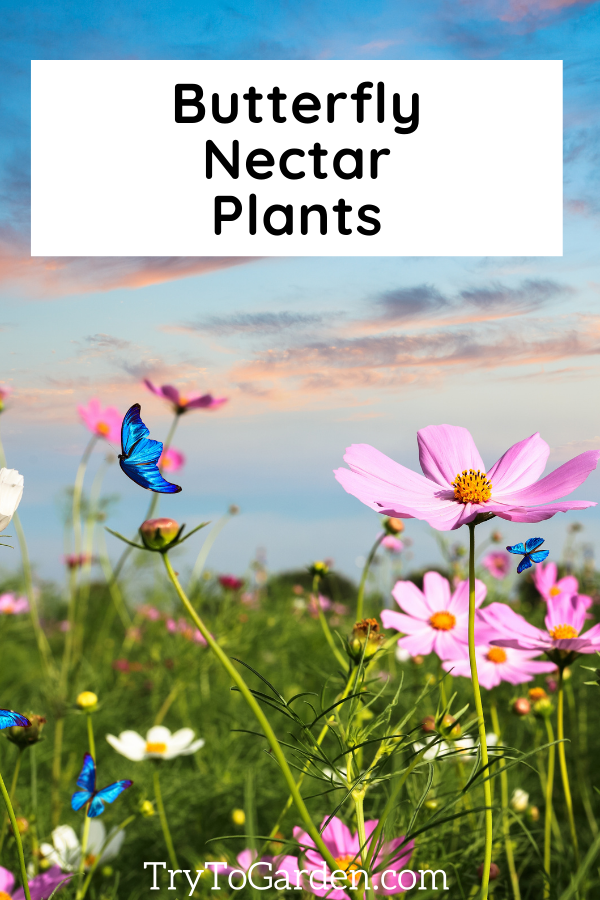
You’ll need a pretty wide variety of plants that bloom all summer continuously and provide a lot of nectar. Butterflies are most active during the mid-to-late summer, so you’ll need to have flowers that bloom during that time.
Annuals tend to bloom all summer, so if you want continuous blooms, you should be sure to include plenty of annuals in your garden. Many perennials are also great at attracting butterflies, but they may not bloom all season.
Be sure to plant larger plants in the back and shorter ones in the front. The taller plants will help block wind from disturbing butterflies and their eggs, and if they’re in the back, they won’t obstruct your view of the butterflies!
There are many shrubs and trees that you can use as windbreaks for your butterfly garden. These shrubs and trees will also attract butterflies with their sweet, nectar-producing blooms. You can try pear trees, plum trees, mock oranges, butterfly bush, hawthorn, blueberry, rose of Sharon, privet hedge, summersweet, redbud, buttonbush, autumn olive, abelia, and buddleia.
Annuals are especially important for butterfly gardens because of their ability to bloom for most of the summer season. Marigolds, zinnias, cosmos, and sunflower are all classic annuals for attracting butterflies.
Other beautiful annuals for butterfly gardens include impatiens, nasturtium, Queen Anne’s lace, verbena, and globe amaranth.
Planting wildflowers can bring in a lot of butterflies. The great thing about wildflowers is their ease of planting. If you want, you can sprinkle handfuls of wildflower seeds all-around an area you wish to cover with them! Sure, some of them will be eaten by birds and other animals, but many will survive and grow.
Good wildflowers for attracting butterflies include coneflowers, milkweed, spearmint, thistles, butterfly weed, ironweed, and New England asters. Several wildflowers are considered too weedy for most gardens, but they are good at attracting butterflies. These weed-like wildflowers include goldenrod, dogbane, and nettles.
Perennials don’t typically bloom for the entire mid-to-late summer season, but they’re still an essential part of any butterfly garden. Some butterflies prefer specific flowers, and perennials are included in those types. This is why it’s important to have a good mix of various varieties of flowers in your garden.
Many perennial flowers are superb for attracting butterflies and providing nectar for them. Aster, coneflower, Shasta daisy, lobelia, passionflower, hibiscus, bee-balm, daylily, goldenrod, chives, sage, mountain mint, false indigo, coreopsis, butterfly weed, black-eyed Susan, phlox, verbena, milkweed, and hollyhock are all super varieties of perennials for butterfly gardens. These varieties are all prized for their ability to provide nectar for butterflies and should be added to any butterfly garden.

